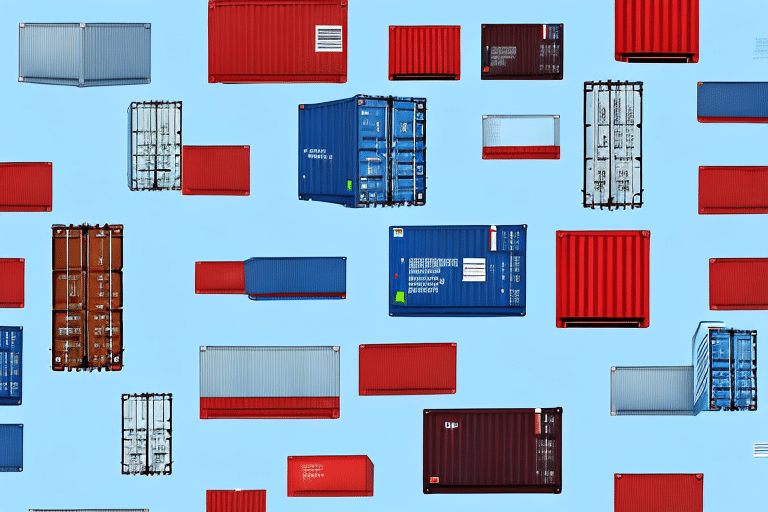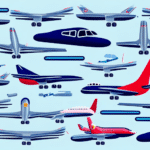Understanding the Importance of Choosing the Right Shipping Method
Choosing the appropriate shipping method is pivotal for ensuring the safety, efficiency, and cost-effectiveness of transporting goods. The right method can significantly impact the integrity of your merchandise, customer satisfaction, and your overall business profitability. Factors such as the type of product, its value, fragility, and the destination play crucial roles in this decision-making process. For instance, perishable items like fresh produce require expedited shipping via air freight, while hazardous materials must comply with stringent regulatory standards.
Comparing Air, Sea, and Land Shipping Methods
Air Freight
Air freight is renowned for its speed, making it ideal for time-sensitive goods such as electronics and medical supplies. According to the International Air Transport Association (IATA), air shipping accounts for approximately 35% of global trade by value. However, it comes with higher costs and weight limitations, and is susceptible to weather disruptions and air traffic congestion.
Sea Freight
Sea freight is the most cost-effective method for transporting large volumes of goods over long distances. It is particularly suitable for heavy or bulky items like machinery and vehicles. The International Maritime Organization (IMO) reports that over 80% of global trade by volume is carried by sea. Despite its affordability, sea shipping faces challenges such as piracy risks and vulnerability to adverse weather conditions.
Land Freight
Land freight, encompassing road and rail transport, is ideal for domestic shipments and shorter international routes. It offers flexibility and lower costs compared to air freight. However, it is subject to risks like road accidents, theft, and traffic delays. Enhancements in logistics technology are continually improving the reliability and efficiency of land shipping.
Assessing Risks and Environmental Impact of Shipping Methods
Risks Associated with Each Method
- Air Shipping: Susceptible to weather-related delays and turbulence-induced cargo damage.
- Sea Shipping: Risks include piracy, theft, and exposure to harsh maritime conditions.
- Land Shipping: Prone to road accidents, theft, and logistical delays.
Environmental Considerations
The environmental footprint of shipping methods varies significantly. Air freight has the highest carbon emissions, contributing to climate change. Sea shipping, while more fuel-efficient per ton-mile, can lead to ocean pollution through oil spills and waste discharge. Land transport's environmental impact depends on the mode; rail transport generally offers lower emissions compared to road transport. Adopting sustainable practices, such as utilizing alternative fuels and optimizing routes, can mitigate these impacts.
Cost-Effectiveness and Budget Considerations
Shipping costs are a critical factor influencing the choice of method. Statista indicates that air freight can be up to five times more expensive than sea freight. Sea shipping offers substantial savings for bulk goods, though it requires longer lead times. Land shipping remains the most economical for short-distance and domestic deliveries. It's essential to balance cost with delivery speed and cargo safety to achieve optimal results.
Navigating Shipping Regulations and Compliance
International shipping involves navigating a complex landscape of regulations that vary by country and cargo type. Compliance with International Maritime Organization (IMO) standards for sea freight, Federal Aviation Administration (FAA) guidelines for air freight, and local transportation laws for land freight is mandatory. Non-compliance can result in hefty fines, shipment delays, or confiscation of goods. Partnering with experienced freight forwarders can help manage these regulatory requirements effectively.
Best Practices for Ensuring Safe and Secure Shipping
Effective Packaging
Proper packaging is essential to protect goods from damage during transit. Depending on the shipping method, packaging should be robust and suitable for the specific rigors of air, sea, or land transport. For example, air freight requires shock-resistant packaging, while sea freight necessitates moisture-resistant containers.
Tracking and Monitoring
Implementing advanced tracking systems allows real-time monitoring of shipments, enhancing security and transparency. Technologies such as GPS tracking and IoT sensors can provide data on location, temperature, and humidity, ensuring that goods remain within specified conditions throughout their journey.
Partnering with Reputable Carriers
Collaborating with trusted carriers and freight forwarders with proven track records safeguards against loss and delays. Verifying credentials, insurance coverage, and customer reviews can help in selecting reliable partners.
Filing Claims for Damages or Losses
In the unfortunate event of cargo damage or loss, understanding the claims process is crucial. Promptly filing claims with detailed documentation, including bills of lading and invoices, increases the likelihood of successful compensation.
Conclusion
Selecting the right shipping method is integral to the safe and efficient delivery of goods. By thoroughly assessing the characteristics of air, sea, and land freight, understanding associated risks and environmental impacts, and adhering to regulatory standards, businesses can optimize their shipping strategies. Implementing best practices in packaging, tracking, and partnering with reliable carriers further ensures the security and integrity of shipments. Making informed decisions in shipping not only protects your merchandise but also enhances customer satisfaction and supports sustainable business growth.






















